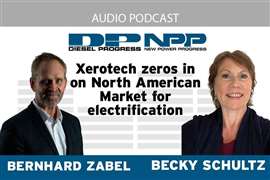Electrification gains ground in North America
25 January 2024
The EU has taken an impressive lead in the global adoption of electrification. While stringent CO2 emissions protocols are a large factor, some believe it’s driven perhaps even more so by the support of governments determined to advance the technology’s use.
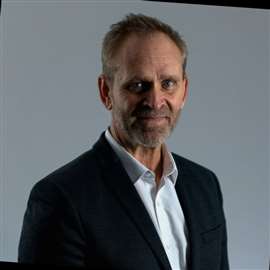 Bernhard Zabel, head of sales, Xerotech
Bernhard Zabel, head of sales, Xerotech
“The EU has done really well in the way that they’ve been able to get government backing behind the programs for electrification,” said Bernhard Zabel, head of sales at Xerotech, an Irish battery systems provider. He points to generous incentive programs and grants that have been made available throughout parts of Europe, particularly in Scandinavia. “The Scandinavian countries have really embraced electrification in providing incentives and big program grants to those that are looking to electrify. [They] have accelerated a need to go beyond just CO2 emissions standard requirements being met.”
This has led to implementation across several key markets. “They’ve successfully been able to electrify equipment in anything from mining to construction to agriculture,” Zabel said. “The marine industry is going to be a big success story in the Scandinavian countries. They’re electrifying the likes of ferries, pleasure cruisers, yachts.”
Such results in Scandinavia and across Europe have not gone unnoticed. “North America has really paid attention. In a way, they’ve used that market as a guinea pig for making sure that the technology works,” said Zabel. “We’re seeing more and more real-use cases out there that [show the] North American market has embraced it.” The underground mining sector, where electrification of excavators, dozers and loaders has become prevalent, is a prime example.
Attractive incentive and grant programs on the federal and state levels – Zabel labels California the “electrification epicenter” – are sparking adoption in other market segments, as well.
“So, although North America is trailing a little bit – [it’s] really effectively trailing what’s happening in the EU by maybe four or five years – the opportunity is quite large from the population standpoint,” Zabel said. “When you’re taking a look at the number of fleets and the serial volumes that might be available to companies like Xerotech to be able to electrify, they are massive in scale.”
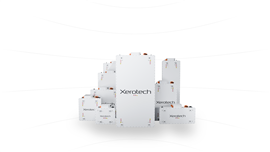 Various sizes and electrical configurations can be packaged based on the amount of energy required. (Photo: Xerotech)
Various sizes and electrical configurations can be packaged based on the amount of energy required. (Photo: Xerotech)
‘Enormous opportunity’
Xerotech sells battery packs in North America used to electrify construction, mining, agriculture and military machines. The country already represents about 50% of its market, and Zabel believes there is “enormous opportunity” for further growth.
“We’re seeing a huge volume of requests coming in from that market to electrify right now. It’s mainly in the construction and mining industries,” Zabel said. “There are a number of different applications that we’re starting to see come to the forefront, as well, so it’s quite an exciting time.”
The company’s battery packs have been developed for use in harsh operating environments that involve substantial shock, vibration and impact, as well as high and low temperature extremes. This includes construction, mining and agricultural applications, with marine a longer-range target.
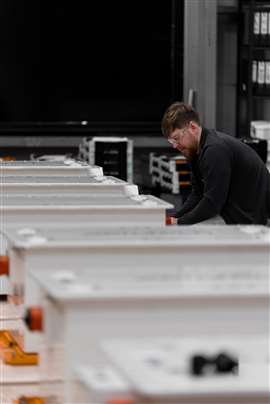 Outside of the battery cells, all elements of the battery packs are manufactured under roof at the Xerotech’s facility in Ireland. (Photo: Xerotech)
Outside of the battery cells, all elements of the battery packs are manufactured under roof at the Xerotech’s facility in Ireland. (Photo: Xerotech)
“The marine industry is probably going to be trailing a little bit,” Zabel said. “In the United States, I don’t think it’s really caught on as well as it has in the Scandinavian countries or places like Spain and Italy, as an example... But it’s just a matter of time, I think.”
Xerotech also offers portable energy storage solutions in the megawatt-hour range for customers harvesting solar or wind power or requiring solutions for construction and other worksites.
‘Off-the-shelf’ customization
Zabel describes Xerotech’s battery pack solutions as both brand and industry agnostic. “What’s unique to Xerotech is we don’t really care about the application. If you need battery power, and it fits, we basically have a solution for you.
“If you have an excavator from two brands of manufacturers, they would likely require two different types of batteries. We can easily supply a battery that would fit both applications,” he continued. “From a customer point of view, it looks like you’re getting a bespoke, or custom, battery but really it’s all ‘off the shelf’ for us. This allows us to be seen as a sole supplier for a number of fleets in various markets.”
Various sizes and electrical configurations are packaged based on the amount of energy required. “We scale on the electrical specification in the amount of energy and voltage that we can provide,” said Zabel. This scalability applies to charge/discharge C rates, as well. “We can provide some unique configurations there, not only in a single pack, but also we can stack up to 20 different packs in parallel to provide you all the way up into the megawatt-hour range for energy storage applications.”
An online configurator tool is available to help customers identify their specific needs and the battery solutions that will suit them. “Along with that, they get all the 3D CAD drawings, DBC files and the full specification data sheet,” Zabel noted. “A lot of the battery pack manufacturers keep that closely guarded, and I can understand that, too. But what we’re trying to enable is ease of understanding of exactly how our solutions fit into an application.”
A team of engineers further supports customers and can help lead them through all aspects of the application.
Vertical integration
Before Xerotech was launched in 2015 as a new company, its founders took a close look at how to go about manufacturing batteries.
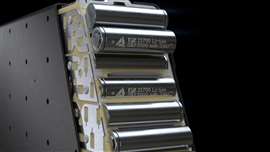 Xerotech chose to standardize on a 21700 cylindrical battery cell due to its ready availability and scalability. (Photo: Xerotech)
Xerotech chose to standardize on a 21700 cylindrical battery cell due to its ready availability and scalability. (Photo: Xerotech)
“We decided that the more vertically integrated we are as a manufacturer, the better,” Zabel said. “We’re taking all the supply chain risk out. All we’re doing is bringing in raw materials and spitting out fully integrate-able battery packs on the other end.”
Battery cells are outsourced from known and carefully vetted suppliers. The company chose to standardize on a 21700 (21 mm x 700 mm) cylindrical battery cell. “The reason we did that is they were the most readily available in the industry and they provide us the opportunity to scale in different sizes and utilize different chemistries in that same cell format,” Zabel explained. “So again, no supply chain risk in buying that particular cell format.”
All other elements of the battery packs are manufactured under roof at the company’s facility in Ireland. “We utilize all the same materials, all the same manufacturing processes, all the same quality processes, so we’re able to accelerate the speed of manufacturing. In fact, most prototype battery pack orders can be [completed] within about four- or five-weeks’ time,” Zabel said. “We’re able to respond to our customers’ requirements very quickly.”
Managed for longevity and safety
To extend battery pack life and safety, Xerotech incorporates a combination thermal management system that can either cool or heat the batteries, based on the environment.
“What we’re doing through our battery management system is enabling our battery packs at a module level to stay at about 25 degrees C. That’s the optimum temperature at the cell level,” Zabel said. “We’re basically extending the life cycle of the battery cell by maintaining that optimum temperature, but we’re also able to charge and discharge more rapidly. So, end of life on our battery packs is much further down the line because of how we thermally manage our packs.”
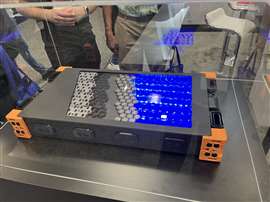 The thermal management system uses an active liquid cooling and heating system that can flood affected modules in the event of thermal runaway. (Photo: KHL Staff)
The thermal management system uses an active liquid cooling and heating system that can flood affected modules in the event of thermal runaway. (Photo: KHL Staff)
Thermal management is achieved using an active liquid cooling and heating system, which also acts as an active fire suppression system. Should thermal runaway occur, the affected modules would be flooded with the same 50/50 glycol used to cool the batteries. “It’s confined in an open sleeve that runs in between each individual battery cell. In the case of a thermal runaway, that battery pack would effectively be quenched through that fire suppression system,” Zabel said.
He added that thermal runaways that occur are typically the result of failing to fully manage the safety and performance of the battery pack. “Our pack safety and performance are completely controlled by our software (that we developed ourselves) through our battery management system. So, we’re quite confident that we have a package that provides a high level of safety and performance benefits,” Zabel said.
Beyond battery retrofits
Currently, Xerotech’s focus is on retrofitting battery packs into existing equipment. “We’re basically taking out a diesel engine and replacing it with a battery, [plus] you’ll have inverters, actuators, fuel cells, power distribution units and many other components,” Zabel said. “I think in maybe five to eight years’ time, OEMs are going to start manufacturing their base equipment to accommodate battery systems.
“We make it as easy to buy a battery as it is to buy a diesel engine, and I believe we’ve achieved that. But it would make it a lot easier if the OEM started actually purpose building their equipment to house the battery application.”
Because each battery pack is customized to the application, Zabel said the company has developed thousands of different configurations and could have tens of thousands by 2025, when the company plans to introduce an even more powerful and configurable next-gen iteration.
“Having the OEMs create a design from the early stages to allow for battery space and for all the equipment that needs to go in as a complete unit is going to help greatly. But then for us to be able to have an even more configurable battery pack and utilize that space to the most efficient level – that’s going to bring a whole new level of power at the equipment and performance level,” said Zabel. “So, we’re quite excited about what’s going to be happening in the future.”
STAY CONNECTED



Receive the information you need when you need it through our world-leading magazines, newsletters and daily briefings.
CONNECT WITH THE TEAM









